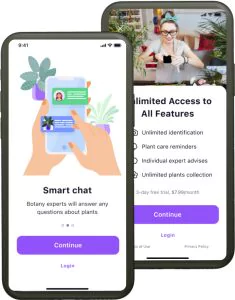There are two types of bad shop assistants: annoying ones, who try to sell you some rubbish, and those who don’t even care to come up and ask whether you need any help. Luckily, there are no shop assistants in IT outsourcing, so you can choose an outsourcing model based on your needs and unbiased opinion.
However, buying an ugly hoodie that will shrink after the first wash isn’t that bad compared to investing tons of money in outsourcing a project with the wrong engagement model. Roughly 50% of companies believe that a proper engagement with stakeholders is the main factor in an appropriate project management.
These companies are hard to disagree with, since your project is likely to face budget wastage, delays, low-quality deliverables, and scope deviation when opting for an unfitting engagement model.
That’s why the JatApp team will try putting a role of a good salesperson and explain what the engagement model really is, describe its types, and recommend which one to choose for your project.
Remember: engagement model is not the same as pricing model
Before we describe what an engagement model is, let’s figure out what it isn’t. Many people confuse IT business engagement models with pricing models, which actually help to decide how your agency should charge you for their services. You can see that the time and material model is often described as one of engagement models for software development. It’s not true! Time and material is a pricing model.
Instead, an engagement model is a framework which describes the relationship between your business and outsourcing agency. The engagement model you choose defines the outsourcing team’s scope of work, cooperation timeline, project management duties, and other relatable details.
There are only four engagement models: managed services, team augmentation, dedicated team, and project-based outsourcing. Let’s discuss each model, so you can understand which one will be the best fit for your project.
Four kinds of relationship you can have with your outsourcing partner
Digital projects vary in size, duration, budget, scope, and so on. For that reason, a need for help from software development companies varies for every single business. The depth of your cooperation with an IT vendor is the main factor that shows the difference between engagement models. So, you need to study each model thoroughly to make the right decision.
Managed services
The managed services engagement model means that you simply order some service from a software development agency. Therefore, opting for managed services is reasonable when you have no tech expertise in a separate aspect of your project such as, for example, user interface/user experience design (UI/UX) or support and maintenance. Your vendor manages all the tasks mostly on their own, while you still have control over the project.
One of JatApp’s cases is a good example of this engagement model. Our client needed to refactor and update an employee engagement app. When the legacy software was updated, it turned out that the code contained numerous bugs.
That is why the client asked for help with quality assurance and testing of their software to make sure that the newly updated application works as it was intended. After bug fixing, the update was successfully released, so the client’s company could use the solution effectively.
Every single feature appeared to work well after quality assurance and testing
Team augmentation
Team augmentation model means that you expand your in-house team with tech professionals hired for you by an outsourcing company.
The outsourced IT service professionals are fully committed to your project and work just like their in-house colleagues, so you’ll interact with them every day. You have total control over the project, but you are free to extend your team with a project manager to be sure your project doesn’t go over the budget and schedule.
You need to extend your team when your in-house employees have a skills gap or you lack workforce for a fast scaling of business. Also, when a company has business goals to meet they often have no extra pair of hands (and bright minds, of course) to complete all additional work necessary for timely business growth. In such cases, team extension becomes a magic pill that helps to improve business processes and keeps the business owners relaxed.
Cunio, a property management platform, makes a good example of a team augmentation engagement model. The company was developing new features to meet their growing business needs. At the same time, the company needed to develop microservice architecture and review the software’s code to ensure that the new release will work effectively.
The company didn’t have the required expertise to complete the latter tasks, so their in-house team was extended by JatApp’s backend developers and project manager. Our professionals worked on the microservices, while the in-house developers focused on building features necessary for hitting new business goals.
With microservice architecture being developed, Cunio managed to deploy new features
Dedicated team
A dedicated team model means that you hire the entire software development team to work on your project. This team is concentrated solely on your project: from project management to support and administration. A dedicated team works as if they’re in your office. You can manage them just like your in-house staff, even though you don’t have to speak to them every day.
It makes sense to outsource a dedicated team when you have no tech workers at all, or you intend to start a long-term project, so your software will be released in multiple iterations.
Our Latvian client’s case is a solid dedicated team engagement model example and it will be a shame if we don’t mention it. The customer asked us to develop Fameelee, a family locator app. JatApp worked on the minimal viable product (MVP) first via project-based model, and then the customer wanted to convert our cooperation into a dedicated team model, so they could have direct control over the project.
As a result of multiple iterations, JatApp’s dedicated development team built such crucial features as accurate real-time location tracking, private and group chats, emergency alerts, battery level and geo-zones tracking, as well as speed limit control.
Real-time location tracking feature in Fameelee
Project-based outsourcing
When you choose project-based outsourcing as your engagement model, you just tell your software development agency what you need, discuss terms, and pay money. The entire management and technical work within the project is a duty of your IT service company, so you’ll occasionally receive updates about how your project is going.
This kind of an engagement model is good for you when you have no tech team to develop a product from scratch, but you have enough resources to start a full-scale software development life cycle.
To understand the extent of IT vendor’s involvement, let’s take the case of a plant recognition app as an example of this engagement model. The customer wanted to build such a product, which is why they outsourced the entire project to JatApp. The project involved product analyst, project manager, two backend developers, iOS developer, Android developer, frontend developer, UI/UX designer, motion designer, and marketing specialist.
The app’s user interface
As a result, JatApp successfully developed the application, the client was very satisfied and left a positive review on Clutch:
“Our cooperation was extremely effective. Their project manager and product analyst communicated with us every day reporting the progress. When we needed to talk directly to the development team they were always open to it. I love it very much.”
Now you know what to choose
For now, you surely don’t need any shop assistant to handpick the right engagement model for your project. Just remember that your choice has to depend on the depth of cooperation you would like to have with your IT vendor. Look at the summary table below to decide what will work best for your project.
As soon as you’ve selected the most appropriate engagement model, it’s time to look for a trusted software agency. JatApp has been working on software development projects since 2015, so we can provide your company with necessary tech expertise and build a solution that will help you meet your business needs.
If you’re ready to work with JatApp by any engagement model we’ve discussed, just get in touch with us. We’ll get back to you as soon as possible.











